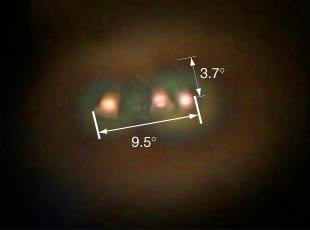Corona from Fogged Eyeglasses
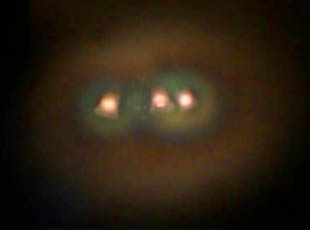
|
When light from a point source passes through a small circular aperture, it does not produce a bright dot as an image, but rather a diffuse circular disc known as Airy's disc surrounded by much fainter concentric circular rings. This example of diffraction is of great importance because the eye and many optical instruments have circular apertures. Diffraction also occurs in the inverse situation when you have a small opaque circle. The corona sometimes seen around the moon is attributed to diffraction from small water droplets or ice crystals. |
The image above seems to be the same phenomenon observed when my eyeglasses were fogged upon entering the warm house after walking the dog on a cold January morning. It is attributed to diffraction from very tiny water droplets which condensed from the fairly dry room air. This diffraction pattern might be used to estimate the size of the condensed water droplets, but the two images below exhibit different colors in the inner part of the diffraction pattern and suggest that different orders of diffraction are manifested in the color patterns.
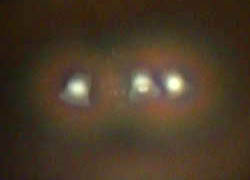
|
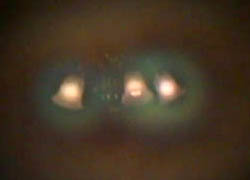
|
The two images above were taken within seconds of each from areas on the fogged eyeglasses probably within a centimeter of each other. The different color patterns are taken as evidence of different sized droplets, although it is not clear what order of diffraction is being manifested.
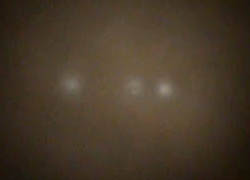
|
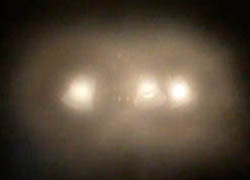
|
Another phase of the fogged eyeglass experiment was facilitated by the fact that my wife had a nice pot of bean soup boiling on the kitchen stove on this cold morning. Another short walk around the cold neighborhood and then putting my glasses above the boiling pot produced a fog which did not exhibit the colored diffraction rings. Presumably the hot saturated air rising from the soup formed larger droplets which did not show the visible diffraction rings - the larger the aperture, the smaller the diffraction pattern. The scattered light in the left image above showed a symmetric decrease in intensity as you moved further from the light. It might be properly described as Mie scattering. At right above is an image taken once the fog on my glasses had time to partially evaporate. There is evidence of diffraction here in the slight modulation of the intensity close to the lights. This is taken as evidence that the evaporation process was leaving smaller droplets which were beginning to produce visible diffraction effects.
Diffraction concepts
Fraunhofer diffraction
| HyperPhysics***** Light and Vision | R Nave |
